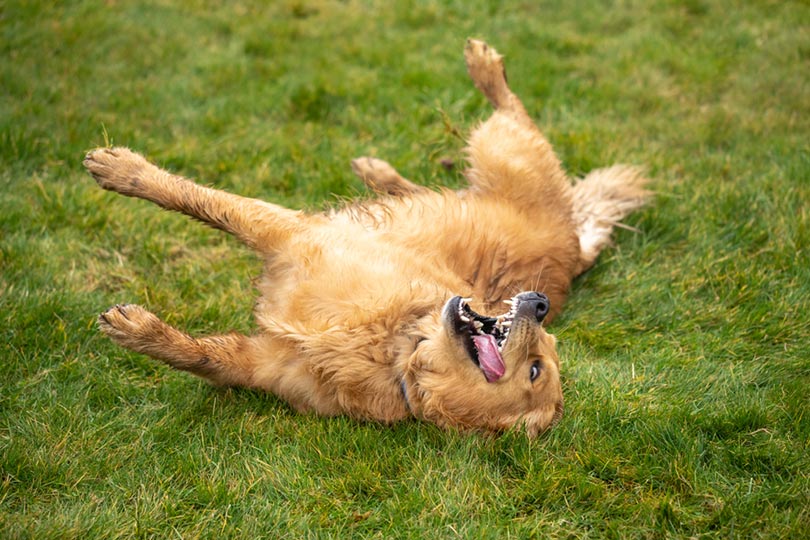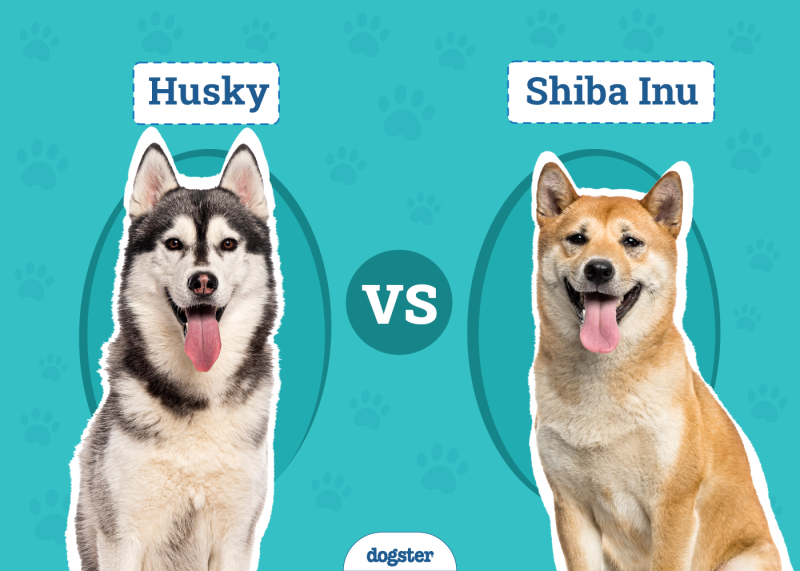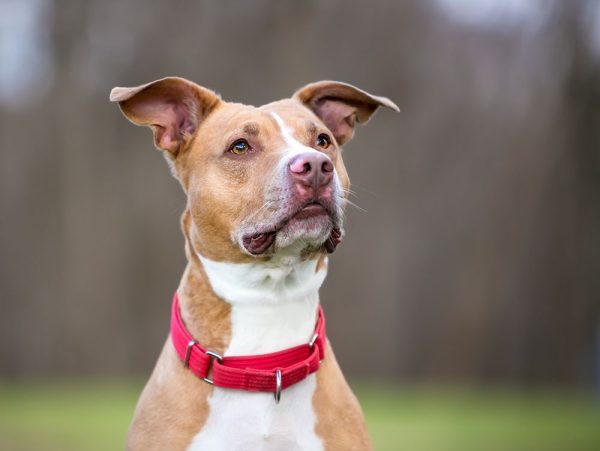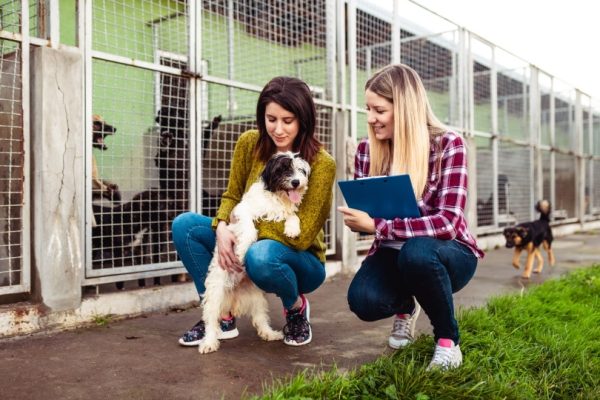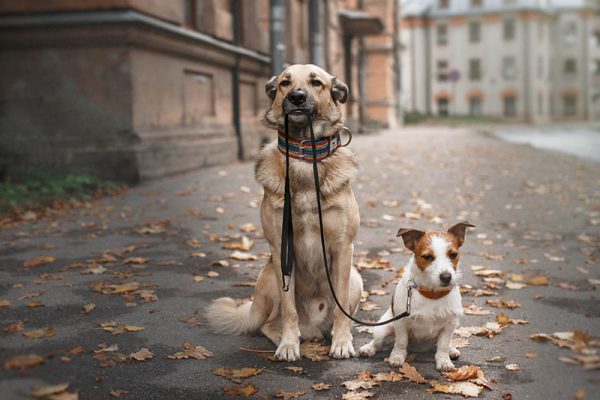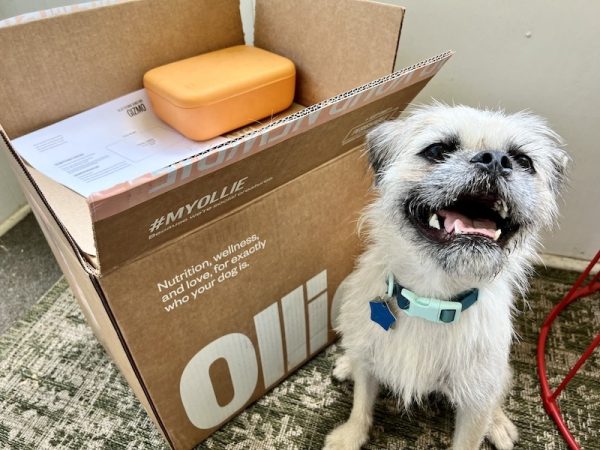In this article
View 2 More +The dog park can be a joyful place full of swooshing tails and happy yips for you and your furry friend, but unfortunately, it can also be an overstimulating, frightening, or stressful place where misunderstanding between canine companions can quickly escalate into aggression and a fight. It’s important to learn how to read a dog’s body language because fear can turn into aggression, especially if they feel trapped.
Conversely, it’s also a good idea to know if a seemingly threatening bark could actually be an enthusiastic call to play. Here are some ways to tell if the really cute newcomer at the dog park wants to be friends, or if you and your dog should leave them alone.

How to Tell If a Dog Wants to Play
Beyond the obvious wagging tail and gleeful barks, you can deduce that the new dog wants to play by these signs.
1. Taking a Bow
Rearing their bottoms in the air and laying on their front paws is a good sign that the dog is asking you or your dog to play with them, especially if their bottom is wriggling. The bow is a gesture that is believed to indicate an invitation to play, similar to how dance partners bow and curtsy after a waltz.
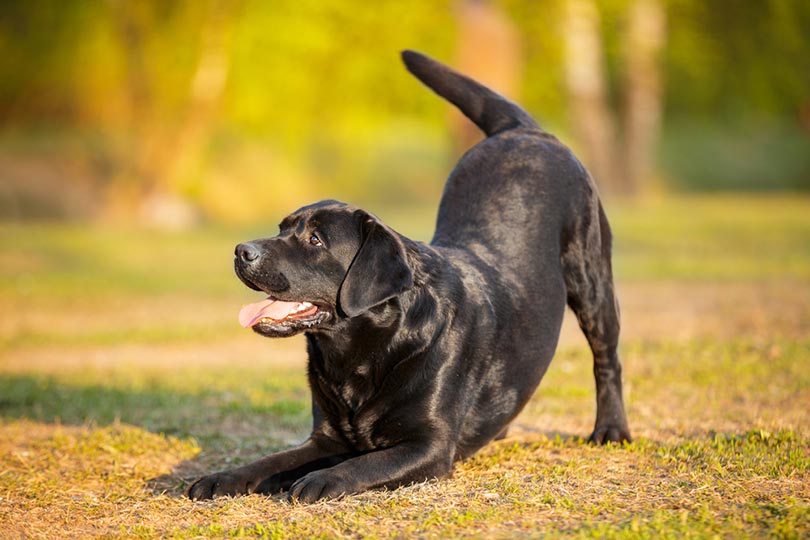
2. Excited Barking
Loud, frenzied barking can be a sign of playfulness or attention seeking, although sometimes barking might also signal fear, overexcitement or even a warning. In these instances, it’s vital to take the rest of the dog’s body language into account. Are they wagging their tails or are they standing stiffly or snarling? Some dogs might appear aggressive when they actually want to play, but others may be telling your pup to back off.
Some dogs may also growl during playing, which sounds often quite exaggerated but is accompanied by a relaxed and playful body language.
3. Rolling Over
Flopping over on their backs, dogs roll over to ask the other dog to play, or because they are simply enjoying themselves. This pose exposes their belly, making them vulnerable. Dogs often chase each other around, taking turns, with one surrendering and falling over.
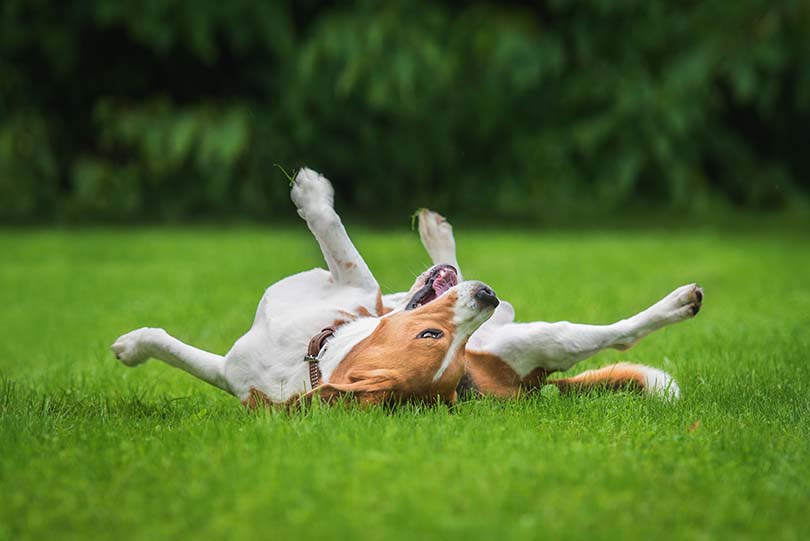
4. Making Silly Movements
Dogs might hop around with a puppy-like gait, tapping the other dog’s tail with their paws or bounding through the open field at the dog park. This dog can’t wait for you to let your puppy off-leash so they can romp together.
5. Smiling
If the dog’s lips are pulled back into a happy smile—not a snarl—then it’s also probably a good sign. Happy dogs often pant and smile when they’re excited.


Signs of Fear or Aggression
You want everyone to have a good time, humans and dogs included. Frankly, a potential dog fight is scary business to be avoided at all costs. Most times animal aggression can be prevented by being aware of body language and intervening before it escalates, giving the dogs a break. Dog parks are not suitable for all dogs and some will prefer one on one play with a dog they know, or a simple game of fetch instead, and there is no reason to force them into the dog park. Here are some signs of fear and aggression that mean you might need to move on.
1. Lowered Tail
A drooping tail or one between the legs that isn’t wagging typically means the dog is scared or uncertain. This behavior is often accompanied by bristled hairs on their back, flat ears, a low growl and sometimes by their lips pulled back into a snarl. If these things happen, you and your dog are not safe. The new dog is obviously scared and may bite if you come their way.
2. Stiff Body and Raised Hackles
Contrasting with a happy, bouncy gait, a dog stiffly standing still or walking slowly while growling is definitely a sign to back off. They may also have raised hackles, or hairs on their back, which isn’t always easily seen.
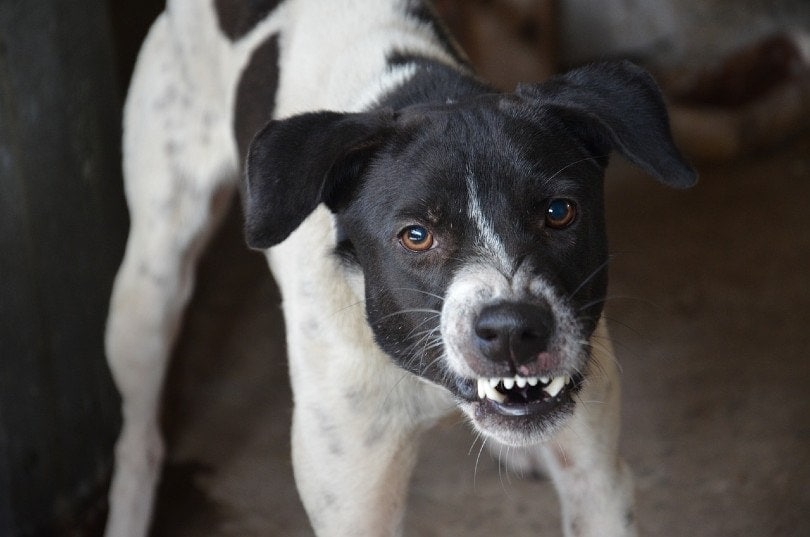
3. Avoidance Behavior
If the dog is shying away from you or your dog, then you should let them be. Never let your dog chase another dog who doesn’t want to engage because this could inadvertently challenge them into a fight.
4. Beware of Leash Reactivity
Some dogs might act fearsome on a leash but be perfectly fine when released into a dog park. You should ask the owner if their dog is friendly, but don’t take their word as absolute truth, especially if they’re already showing obvious signs of fear or uncertainty. Use your own discretion in these instances and follow your dog’s body cues.
Be mindful that there are different dogs out there, some with previous behavioral or medical issues, so never allow your dog to just run up to another dog, no matter how friendly your dog is, until you get the okay from their owner, as some dogs are reactive on the leash and your dog approaching them could cause them serious stress or even have a negative effect on their reactivity training.
If you’re concerned about your own dog’s behavior we suggest you speak to a vet.
If you need to speak with a vet but can't get to one, head over to PangoVet. It's our online service where you can talk to a vet online and get the advice you need for your pet — all at an affordable price!


How to Meet a New Dog
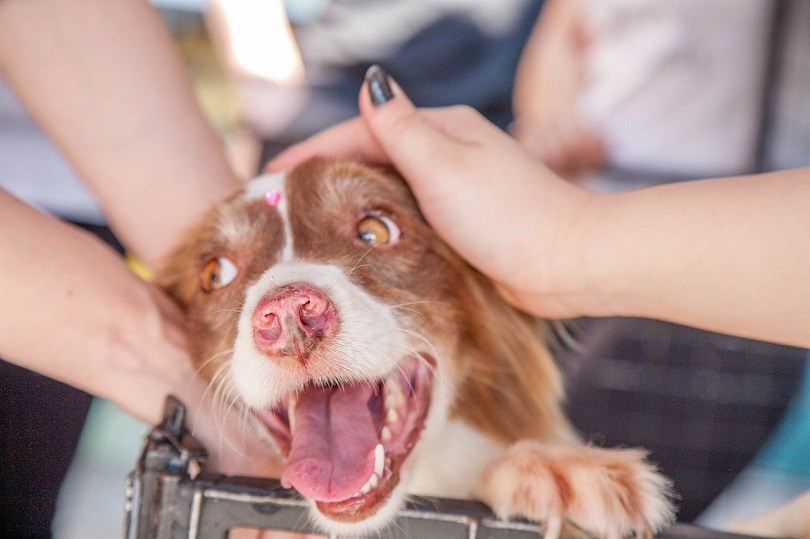
When you meet a dog for the first time, the very first thing you should do is ask the owner if it’s okay to say hi. Never assume that it’s okay to pet someone’s dog because they might be working through behavioral issues or be a service dog in training.
If it’s okay with the dog’s parents, proceed with a calm, welcoming voice. Don’t rush into petting them all at once but let the dog decide if they want to come any closer if not. If they are not interested in you or are taking a step back, respect this and do not engage in any interactions. If they come to you and seem relaxed and keen to interact, hold out your hand in a fist a few inches away from the dog’s face for them to sniff. You should offer your hand in a fist so that they can’t bite your fingers if something about you triggers them. Never approach an unfamiliar dog head on and avoid direct eye contact, which may come across as threatening.
A friendly dog will typically start wagging their tail at this point and ask for pets by coming forward. If they shy away by backing up, raising the fur on their back, or lowering their tail without wagging, then you should back off. Never force yourself on a dog because a cornered dog might bite you out of fear.

Conclusion
It’s important to make sure everyone is having fun at the dog park to keep the environment enjoyable and lessen the risk of a terrifying dog fight. If you’re meeting a new dog for the first time, follow these tricks and tips to keep yourself and the new dog safe. The key to preventing fear or conflict is to make sure everyone is comfortable, even if you have to leave the situation to prevent a fight. While you shouldn’t be fearful of meeting new animals, aggression can escalate quickly so it’s always better to be safe than sorry and leave if you feel like a fight is coming.
- See also: Why Does My Dog Bow to Me?
Featured Image Credit: VDB Photos, Shutterstock
